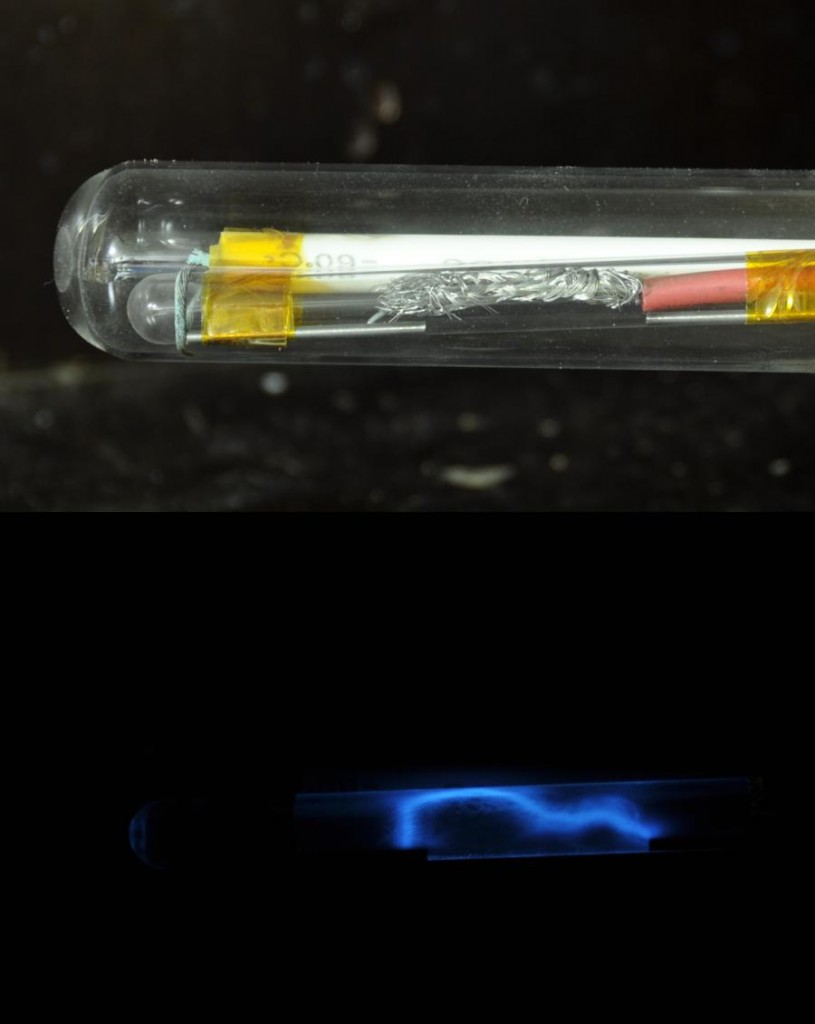The inner glass tube of the air-gap flash so far was made of Pyrex. The spark has a temperature of about 30,000 degrees Celsius, so the flash gives the pyrex a horrible temperature shock (more than 30,000,000,000 degrees Celcius per second). Pyrex is a good choice, since it has a very low thermal expansion coefficient, causing a minimum of stress in the material when heating up. For the same reason Pyrex is also very popular in kitchens (glass that does not break in an oven) and telecopes (mirrors that need to keep their shape extremely accurately at a range of temperatures, for the Hale telescope they even tried quartz, but gave up and used Pyrex).
Still, after a random number of flashes the Pyrex tube tends to shatter to small pieces.
In comes quartz: it has an even lower thermal expansion coefficient (4e-7 m/mK, about four times lower than that of Pyrex).
To my surprise the quartz tube has a beautiful blue afterglow for several minutes, which reminds me of Cherenkov radiation as seen in nuclear reactors. After some searching I found it is blue phosphorescence, caused by impurities in the quartz, cuased by the UV in the spark. It shows nicely how the spark went over the surface (different every flash).
